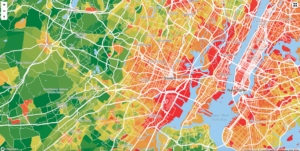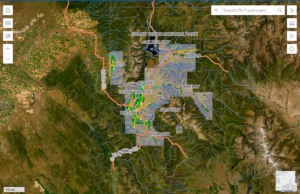Chapter 1:
I find these readings to be in a format that makes them much easier to read than the previous week’s readings. As I stated in the first blog post, it’s interesting to see how much GIS and the associated software have grown over the past two decades or so. Prior to college and maybe up until sophomore year, I had never heard of GIS until it was mentioned to me by academic advisors. Even then, I still had no clue what GIS entailed until last week. Chapter 1 is very useful in breaking down the basics of GIS into an easy to understand format, such as listing out the steps from making a question to getting results. As someone who does a lot of fishing, I like to think I’m quite familiar with maps and geographical formations and features as understanding these things play a large role in the activity. Chapter 1 also lists several common geographical tasks such as mapping the location of things, mapping density, and mapping change. The chapter then goes into different types of data, such as continuous data. While the explanation between ‘discrete’ and ‘continuous’ data does clear some things up, the explanation of what entails discrete data could definitely go a bit more into detail. Being that I’m also very ADHD, having pictures and charts to explain things rather than walls of text is also very useful in understanding the reading. Reading can only get me so far though and once it goes into things such as counts, ratios, values, and data tables it starts to lose me. While I understand what things such as ratios are of course, getting into the numerical and data aspect of things is a bit rough.
Chapter 2:
The second chapter goes into more detail about mapping and the process behind it. Given that when you’re analyzing data, you need to be able to see where things are, showing how mapping may be useful in the context of GIS. It also further highlights the usefulness of GIS as a tool and the many applications for it as outlined in the first blog post. Maps can also be broken down into various categories and groups such as assigning color and coordinates as a way of making the map easier to read and understand, along with how the map is intended to be used. Mitchell does also warn of adding too many categories to the map as the more categories there are the more difficult the map will be to read. Mitchell outlines a rule of seven, with seven being the most categories any map should have. The factors which play into the categories needed or desired generally stem back to the scale of the map in question and the features on it. For example, a large map with many features may need more categories of which the seven category rule may then restrain and make things more difficult. Then of course there are different types of maps depending on what and how much data needs to be visualized. For example, single type maps being the most basic maps display data using only a single symbol. The chapter ends with various ways of deciphering and analyzing maps just by looking at them, for example using symbols, landmarks, references, and patterns.
Chapter 3:
Chapter 3 is by far the longest chapter of the first three chapters and is incredibly intimidating. That’s not to say that chapter three isn’t interesting though. Each section presents a question to the reader that guides them through a sort of map making process. Chapter 3 also re-elaborates many of the ideas and concepts discussed in the previous two chapters, such as choosing which data points to use, counts and amounts, ratios, and ranks. By using certain data points, among other factors, you can get the most out of the relationships between the larger data sets and the smaller data sets. Maps are not limited to just data points but the other aforementioned concepts and factors such as rank can also be used. Another main idea from the chapter is if you are presenting a map to answer certain questions, or if you are creating a map to analyze data. Using classes on a map allows readers to more quickly compare areas and is useful in displaying data such as poverty rates. Regarding the making of the map itself, chapter 3 also goes over details such as graduated colors and symbols, charts, contour lines, and 3D perspectives. For example on page 83, a map outlining fish habitat is detailed using graduated colors to show the ideal habitat for fish compared to surrounding waterways. Contour lines are something that have always managed to confuse me somewhat. I understand how they work in terms of showing the rate of elevation change, but not the verticality of said change. Overall the data presented here is a mouthful, but it still manages to be interesting in some parts.


